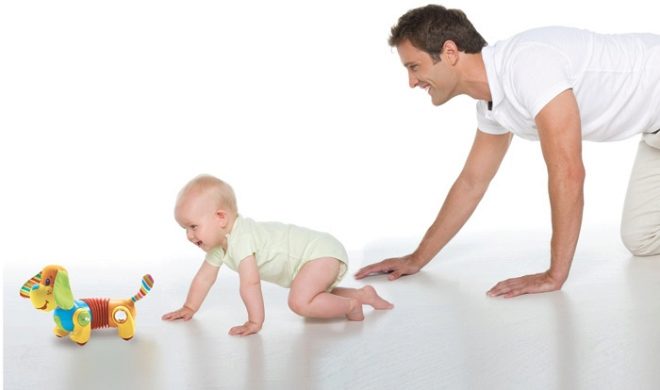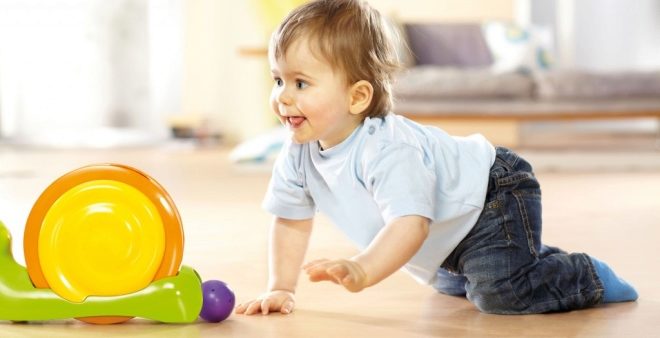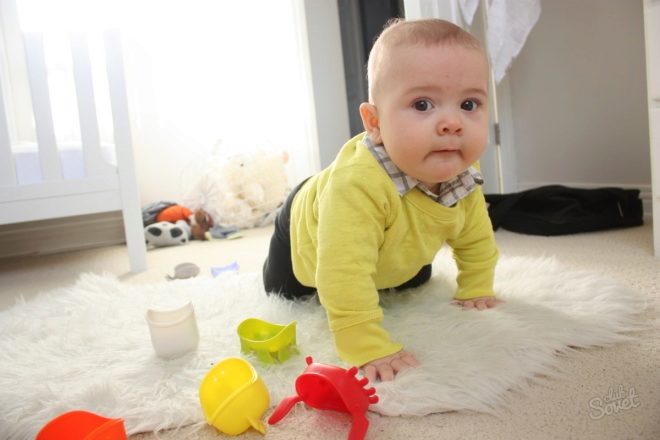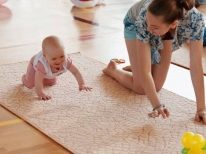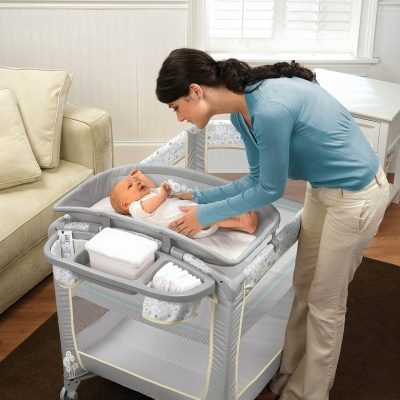Dr. Komarovsky on how to teach a baby to crawl
All children are very individual. Develop all in its own way. One begins to sit at 5 months, and at 8 - is already trying to stand and even take the first steps around the perimeter of the crib, while the other at this age is still developing the sitting posture. There are children who are supposedly not going to sit at all - they tend to crawl right away, because in this position they are most comfortable and safe.
About skills
If the child is ahead of the calendar developmentThis causes pride and delight in parents. And if he even slightly lags behind his peers, mothers begin to sound the alarm and blame themselves all over. Many are trying to help your child learn new skills, and rightly so. With questions about how to teach a baby to crawl and whether or not to do it at all, they often turn to doctors.
Yevgeny Komarovsky urges parents to abandon value judgments regarding their own child. The norms and terms of development of each baby are different, they may differ significantly from the average. Parents are especially worried about the physical development of karapuz - one child crawls at 5 months, the other and at 7 months does not sit or crawl.
The best thing parents can do for their child is to stop paying attention to neighbors and girlfriends who stubbornly instill uncertainty about the proper development of your child.. If you create all the conditions for the normal development and growth of the child, as well as regularly visit the pediatrician, and his physical development of your offspring does not cause any questions and concerns, there is absolutely nothing to worry about.
About crawling
There are children who do not crawl. Totally. From a sitting position, they immediately begin to get up and take the first steps. The crawling stage, according to Evgeny Komarovsky, is very useful and necessary for the health of the human back. That is why crawling should be strongly encouraged and supported. If the child began to crawl himself, the parents will be easier. If he categorically refuses to move on bellies or on all fours, it is an occasion for parents to seriously think about whether they did everything right.
Often, moms and dads, in an effort to see their karapuz upright as soon as possible, ignore crawling in principle. They put the child on the legs and lead the handle, buy him various devices that help the child to be upright (walkers, jumpers, etc.), and could simply crawl along with it. The benefits of this would be much greater.
Attempts to verticalize a plump, plump baby, an overweight baby are especially dangerous. For such babies, crawling should be encouraged with double enthusiasm. And all the walkers and jumpers from him (and his parents) should be hidden as far as possible.
How to teach?
The ability to crawl is laid by nature, parents should only help the baby a little to “remember” it. Usually the process of moving in space using crawling begins at the age of 5-6 to 8-9 months. If the child is not sitting older and does not crawl, you should consult with your doctor to find out what the reason is in the muscle weakness of the back and limbs or in the individual features of the baby. Stimulating crawling is a necessary set of measures.
Preparatory stage
The preparatory stage is to stimulate, create motivation.If the child is not interested in crawling, he will not crawl. So, you need to create him need to crawl. Put in front of him a beautiful bright toy or a very interesting object that the crumb cannot reach without trying to push its body forward a little from the prone position. If the child is already sitting, it will ease the task, if not yet - do not force him to sit down, it is better to encourage crawling.
The main stage of training includes a wellness massage to strengthen the muscles of the back, neck and abdomen, as well as the exercises themselves. Ideas about what posture to crawl in is best - just parenting. Kids themselves choose a comfortable body position. Even if from the side it seems that the child is crawling incorrectly, pushing with only one foot (or crawling on his stomach, spreading arms and legs and waving them), there is no reason to interfere and try to change something.
Slow crawling
Quite often, children who have been helped to get on all fours “freeze” for a long time in this position. They can sway, as if checking whether they hold the balance, but do not hurry to move forward. Komarovsky recommends that these "slow" karapuzov not rush. They pass an important stage, studying the vestibular capabilities of their own body.
Wise parents will help them in this - they will turn on rhythmic music or will begin to recite poems and countdowns in time with the movement.
The specialist advises parents not to search the Internet for videos on how to teach a child to crawl at 5 months using the Komarovsky system (this is the very request that is very popular). This video does not exist, because the age at which the child begins to crawl is different. From the parents, an active help to the toddler is needed when he himself is ready for a new way of moving, and this often happens much later than in 5 months.
However, several techniques that will help teach the baby to crawl, Yevgeny Komarovsky still prompts.
- Personal example. From the side it looks ridiculous and sometimes even ridiculous, but a better way to teach a child something than a personal example has not yet been invented. If the child is lying on his stomach, crawl next to him in a crushing manner. If he has already gotten down on all fours, get up close and show how to move. Babies who are afraid to move forward can be helped by supporting them with their palm under the tummy. If for a couple of days on all fours the whole family will rise, including brothers and sisters, it will be generally perfect.
- The mission must be doable. If you put the toy too far from the child, trying to interest him in crawling, the crumb will quickly realize that it is difficult, difficult or impossible to get at all. Then he will stop trying and will accept the inaccessibility of the desired subject. As an option - he can start a heart-rending yelling, demanding this toy. But if you put it side by side, and every day move a little further, then the crawling process will occur naturally, with the mutual interest of the parties.
- Learning movements. In the daily gymnastics or massage procedures, you should add new exercises that will simulate crawling and train your muscle memory. You can put the child on the back and alternately bend and unbend the legs in the knees. This is not only a useful procedure, but also a fun game. You can put a soft cushion under the tummy of the child, take it by the legs and “roll” it a little with the stomach on the cushion, while the crumb must rest with its handles on the hard surface of the floor.
Another effective exercise resembles the movement of a frog - put the baby on the stomach on a hard surface, alternately bend both legs at the knees and lightly spread it to the sides (it will look like a frog's swimming style). After some time, in this position you can substitute the palm so that the crumbs of the feet rest on it, then the baby will learn to push off and make the first inertial movement forward.
Stretching arms and shoulder girdle will help walking on his hands. If the baby is leaning well on his hands while lying on his stomach, gently take him by the legs and slightly raise them, gently push the child forward so that he begins to “step over” with his hands. Do not do it too harshly, otherwise the kid may hit his head hard.
It is enough to repeat these exercises 2-3 times a day for 15-20 minutes. If the parents carefully observe the time and regularity of the lessons, the child will master the crawling in 4-6 weeks.
Where to crawl?
Tight playpen or limited crib space does not contribute to the development of crawling skills in a child. To make the process go faster, it is best to arrange a place for your baby to exercise on the floor. You should not do it on a cold floor, it is best to cover it with a warm, but not very thick blanket, and to lay diapers on top. Do not practice crawling on couch or bed, otherwise the fall can not be avoided.
Security
Dr. Komarovsky advises mothers to look at the world through the eyes of a child in order to better understand what he wants and what he is afraid of.. To do this, he recommends that moms lie on the floor, first on the back, then on the stomach, and take a good look around. Immediately it becomes obvious where and what sticks up and lies badly, which attracts the attention of the child. Wires, dangerous corners, alluring drawers of chest of drawers - all this will look obvious from below, and it will be easier for mom and dad to understand how to protect the child.
Some parents believe that it is enough to buy a playpen for children to ensure safety. Yevgeny Komarovsky emphasizes that the playpen is a great way to create a crummy safe space, but only for the time when mom needs to leave (to the kitchen, to the bathroom, to the toilet).
If the mother is free and is in the same room with the child, there is no need for an arena. While mother reads or works on the computer, it will be much more useful for the child to crawl on the floor.
If you decide to buy a playpen, you can choose a multifunctional design that quickly transforms into a changing table, a bed, an electronic rocking chair with music and a night light. Many arenas have wheels on their feet, with their help, you can easily move the playpen with your child around the apartment. So the crumb can, together with her mother, cook dinner in the kitchen or vacuum in the living room.
When do you need to consult a doctor?
If parents regularly do exercises, massage for a couple of months, and there are no noticeable results (besides, the child is already 9-10 months old, but he doesn’t sit and crawl), this is a reason for a visit to the orthopedic surgeon and the neurologist. If no health problems are identified, parents will have to go for certain pedagogical “tricks”.
Little tricks
- All children are greedy. If you invite a girlfriend with a child, who is already crawling or even walking, and leave the children to play in the same space, the guest, who is more mobile, will quickly get hold of all the toys of your little bummer. Usually, the sense of ownership takes over, and the child begins to attempt to move in order to take back his property. Maybe this will not happen in the first visit of friends (and not in the second), but it will definitely happen.
- All kids love to play. If you make small sheets of sheets that are worn under the child’s arms for support from above, and you equip the surface using the Glen method (an inclined surface on the main one), then such leisure will be perceived by the child as a game, and crawling will become the natural end of this game.
- Convenience. To crawl with pleasure, the child should not feel uncomfortable. Check how spacious the clothes are on it, whether the seams, the fly, the zippers and the snap-buttons fasten it. In the summer it is better to conduct such exercises in one the diaper. In winter, the child should wear easier than at rest, because the active movement will increase sweating.
Tips
You should start actively helping your child learn to crawl only if the baby is "lazy" or is a little behind in development. Those who have chosen to crawl on their own and have already begun to implement an individual development program, it is better not to interfere, even if the child moves only with the help of one leg or does it backwards.
Pediatric practice shows that a child who has learned to crawl quickly will start walking later. Therefore, the transition from crawling to standing should also be timely, correct and smooth.
For details, see below in a small video of Dr. Komarovsky.



